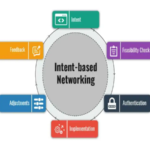Adverse events and near-misses occur daily in hospitals. However, incident reporting may take a back seat when a facility is swamped with patients and life-or-death situations hospital Incident Reporting Systems.
It can be incredibly frustrating for staff when they file a report and never receive further feedback. That’s why it is crucial to let them know how their efforts are utilize to improve patient safety at your hospital.
Improved Human Performance
In a bustling hospital with doctors and nurses running from one room to another, patients in life-or-death situations, and the constant hum of medical equipment; mistakes are bound to happen. And when they do, hospital incident reporting systems give staff a structured framework to document and report them.
The best way to ensure that all incidents are reported is to design a system that makes it as simple as possible for the healthcare professional to file a report. For example, pre-filled fields and a simple interface can significantly speed up submission time. Using a flexible format that allows users to select from multiple options or a drop-down menu based on previous responses can also improve usability.
It’s also essential to remove barriers preventing facility staff from filing reports, such as uncertainty about what events should be documented. Finally, healthcare leaders need to understand that they will get more value from their reporting system if they can dive; into the data and use root-cause analysis methods to make sense of the reports submitted.
When used locally, incident reports can serve as a sentinel for problems that require immediate attention, such as training on specific procedures, implementing new safety checks; or adjusting medication protocols. Aggregated at a national level; these reports can inform new industry-wide safety guidelines, changes to equipment and medications, and simulation-based staff training.
Enhanced Safety Culture
In addition to providing a safety alert and pointing out potential problems, hospital incident reporting systems offer a variety of other benefits that contribute to improved patient outcomes. They can help you identify the causes of unsafe care; which helps with training staff to prevent similar errors from occurring in the future.
Unfortunately, despite the importance of incident reporting, the process can be intimidating for staff members. In some cases, they may feel a reported incident is perceive as a critique or believe; they have less time for patient work due to the increased IR workload. In other cases, staff may not report incidents at all.
A well-functioning incident reporting system can address many of these challenges, but hospitals must go beyond just implementing a user-friendly and automated one. They must also build a culture that encourages safe reporting and supports continuous learning through an incident management system.
This means ensuring no incentives for non-reporting; a policy against retaliation is in place, and hospital leadership exemplifies these principles by being visible to their employees. It also means addressing the issues of culture, which are sometimes intangible, with a series of targeted interventions. Hospitals that take a holistic approach to improving patient safety will see the highest results.
Better Training for Staff
The need for healthcare staff to report incidents is essential to preventing patient harm. However, it is also necessary that they feel comfortable doing so. Research shows that staff often refrain from reporting incidents because they are unsure what should be said or fear being judge by their colleagues. Facilities can increase staff’s comfort level by providing clear guidelines on what should be reporte and how to use the hospital incident reporting system.
It is also essential for staff to see the outcome of their reports. This can provide a sense of accomplishment and help them to understand that their efforts are not in vain. Additionally, letting staff know that the information they provid was used to make improvements at the facility helps them continue to participate in this process.
Medical mistakes are rarely due to a single factor; they almost always result from inadequate training, lack of equipment, and poor procedures. Hospitals must create a culture of transparency and accountability where staff are encourage to report mistakes without fear of punishment. This will lead to better patient care and a safer environment for everyone involved. Streamline the incident reporting process with healthcare risk management software that lets your team report incidents and near misses.
Increased Compliance
Hospitals can boost their staff’s morale and encourage them to report more incidents by implementing a system that’s easy to use. A healthcare risk management system with reporting, automation, and analytics functionality can help. It also helps ensure the hospital’s leaders aren’t incentivizing non-reporting, prohibit retaliation against employees who speak up; and communicate hospital Incident Reporting Systems these compliance measures during training sessions.
Many medical staff’s reluctance to report errors comes from feeling like leadership or other colleagues won’t take them seriously. This is especially true if the incident reporting process is confusing, time-consuming, or restrictive. Hospitals can also encourage increased reporting by providing more transparency about using data from these reports to improve patient safety and facility operations.
Lists improving team communication and cultivating a culture of continuous improvement. Using incident reporting systems to achieve these goals is vital.
Lastly, by using resolved incident reports as case studies in staff training sessions and documents; hospitals can teach their employees about the human errors or safety; hazards that lead to problematic patient outcomes. This information can then be applied to prevent similar incidents from occurring in the future. Staff who can learn from the mistakes of their peers and patients are better equipped to provide high-quality care.




